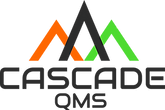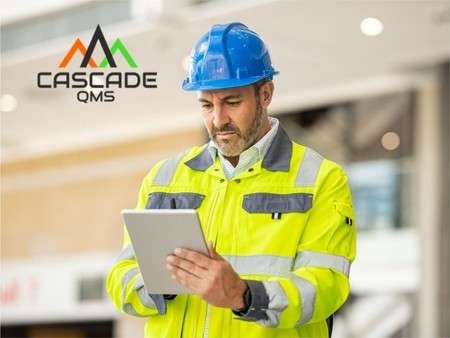First Step in Compliance
If your business has been considering contracts for large oil and gas companies such as Marathon®, Philips 66®, Chevron®, and Shell®, you will likely receive a document called a Supplier Setup Form.
These forms are the first step of the onboarding process before engaging in compliance platforms such as ISNetworld® and Veriforce®.
What is a Supplier Setup Form?
A supplier setup form is a document companies use to gather information about a new supplier. This form typically includes the supplier’s name, contact information, banking information, and tax identification number. It may also include information about the supplier’s products or services, terms and conditions, and certifications or licenses.
The purpose of a supplier, the setup form is to provide the company with all of the necessary
information to set up a new supplier in its system and establish a business relationship with the supplier. This information is usually used to create a new supplier record in the company’s accounting or procurement system, and is used to process payments and track orders. Additionally, some companies may also include a section on the form to collect information on supplier’s compliance with the company’s policies and standards, such as code of conduct, quality, safety, and environmental standards, and supplier diversity requirements.
Requirements of a Prequalification – Supplier Setup Form
To qualify as a contractor or vendor for big companies like Phillips 66®, companies must meet specific needs and standards set by the company. These requirements may include, but are not limited to:
-
Having a good safety record and commitment to safety
-
Having the necessary licenses, certifications, and insurance coverage required to perform the work
-
Being financially stable and able to provide financial statements or other financial information as requested
-
Having relevant experience and a proven track record of completing similar projects successfully
-
Meeting Phillips 66®’s supplier diversity requirements
-
Having a good reputation in the industry
-
Having the capability of meeting the project delivery schedules and budgets
-
Meeting other specific needs that Phillips 66® may have for the type of work being considered
It is important to note that these requirements may vary depending on the specific project and location. And also, Phillips 66® may have a prequalification process where companies must submit information and documentation to demonstrate their qualifications before being considered for a project.
Visit Phillps 66® Vendor Portal here for more details.
What is Safety Lingo?
Often, new or small companies need an established safety culture and quality management system, or full-time safety professionals need clarification on the terminology embedded in contract requirements. Hiring a business consultant such as Cascade QMS is the ideal way to ensure proper completion; however, it’s always helpful to familiarize yourself with safety lingo.
Safety lingo refers to the specific terms and phrases commonly used in safety and health. These terms are used to communicate and convey important information related to safety and health hazards, procedures, and practices clearly and concisely. Some examples of safety lingo include:
-
PPE (personal protective equipment): refers to the clothing, equipment, or devices that employees wear or use to protect themselves from hazards in the workplace.
-
OSHA (Occupational Safety and Health Administration): refers to the federal agency responsible for enforcing safety and health regulations in the United States.
-
JSA (job safety analysis): refers to a process used to identify and evaluate the hazards associated with a particular job or task and to develop procedures to control or eliminate those hazards.
-
HAZMAT (hazardous materials): refers to dangerous or potentially harmful substances to human health or the environment.
-
Near miss: refers to an incident that could have resulted in injury or damage but did not due to luck or employees’ actions.
-
Toolbox talk: refers to a short, informal safety meeting held before the start of a workday or before a specific task to discuss safety issues and procedures.
Understanding and correctly using safety lingo can help promote clear and effective communication within the workplace and help ensure that everyone is aware of the potential hazards and how to work safely.
Understand your programs.
Knowing what you and your company agree to when filling out manual prequalifications.
It’s a great practice to read requirements thoroughly and ensure that your documents and safety programs comply before acknowledging ownership. For example, you may find a question relevant to your drug and alcohol policy. There are many different types of drug and alcohol policies in existence. Understand exactly what your hiring client requires of your business before selecting a box.
Common Hiring Client Requirements
-
Zero tolerance policy: This type of policy prohibits the use, possession, or impairment from drugs or alcohol in the workplace, and may result in disciplinary action or termination for violators.
-
Drug-free workplace policy: This type of policy prohibits the use, possession, or impairment from drugs or alcohol in the workplace, and may also include provisions for drug testing and employee education.
-
Substance abuse assistance program: This type of policy encourages employees to seek help for substance abuse problems. May include provisions for employee assistance programs, counseling, and rehabilitation.More importantly, know exactly what type of policy your business has. Some common types of policies include:
-
Reasonable suspicion testing: This policy allows employers to conduct drug or alcohol tests when there is reasonable suspicion that an employee is impaired on the job.
-
Post-accident testing: This policy allows employers to conduct drug or alcohol tests after a workplace accident or incident.
-
Random testing: This type of policy allows employers to conduct random drug or alcohol tests to deter substance abuse in the workplace.
-
Medical marijuana policy: This type of policy outlines the company’s stance on using medical marijuana, whether it’s allowed or prohibited, and the conditions under which it is allowed.
It’s important to note that employers must comply with state and federal laws and regulations regarding drug and alcohol testing. Employers should also be aware that a drug-free workplace policy may impact employee privacy rights, so the policy should be drafted carefully and in compliance with the laws and regulations.
Transparency Support
All in all, transparency is vital. The last thing your client or your business wants is a worker to be at risk and unprepared on a job site. Please answer all questions accurately as they relate to your safety culture. If you need help with your reporting, Cascade QMS can help you! We have an extensive collection of safety programs and tools to bring your company’s safety culture to a desired level of acceptance. Safe time and gain compliance with our ISNetworld® Management Plan. ISNetworld® certification is right away.


